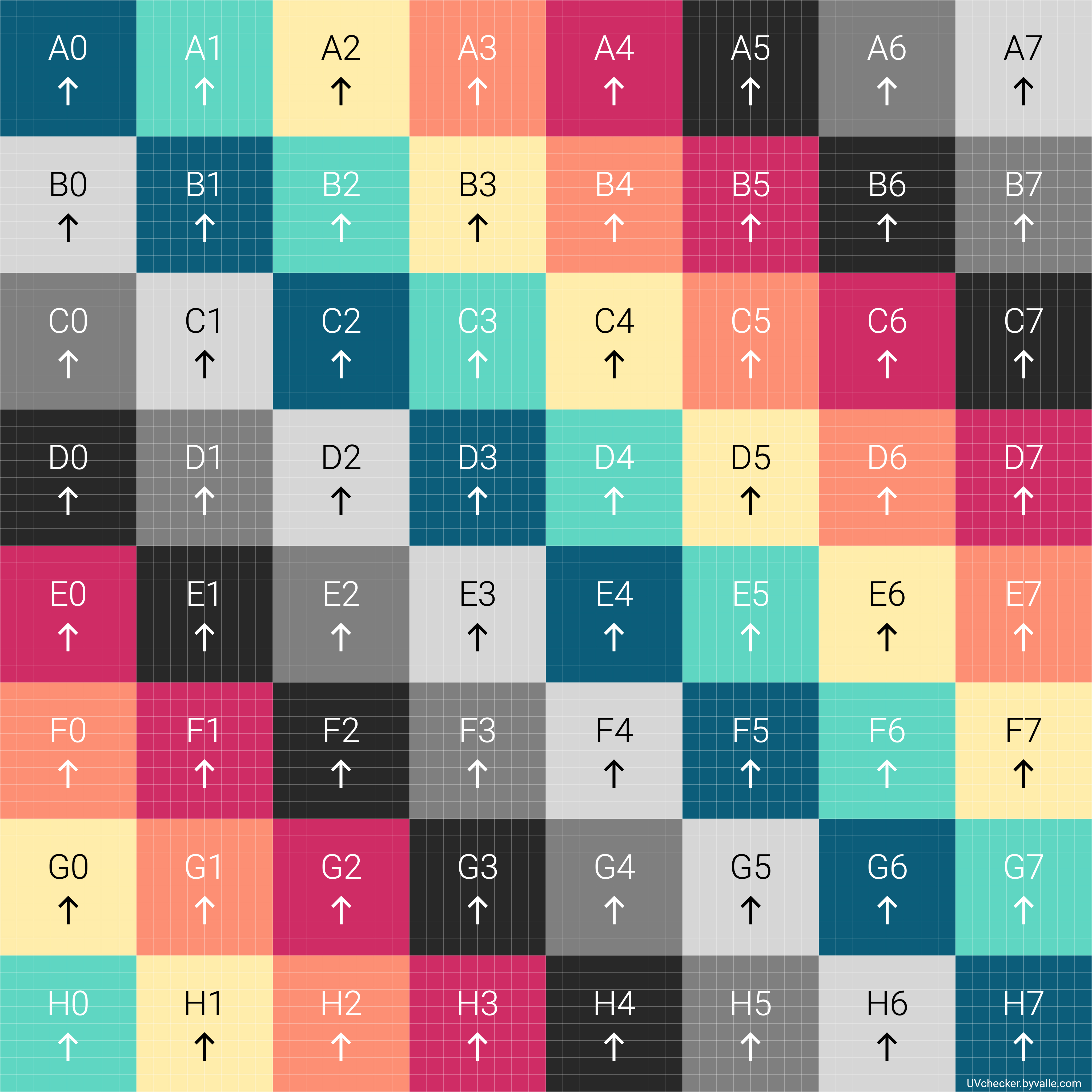UV mapping on:
[Wikipedia]
[Google]
[Amazon]
UV mapping is the

3D modeling
In 3D computer graphics, 3D modeling is the process of developing a mathematical coordinate-based Computer representation of surfaces, representation of a surface of an object (inanimate or living) in Three-dimensional space, three dimensions vi ...
process of projecting a 3D model's surface to a 2D image for texture mapping
Texture mapping is a term used in computer graphics to describe how 2D images are projected onto 3D models. The most common variant is the UV unwrap, which can be described as an inverse paper cutout, where the surfaces of a 3D model are cut ap ...
. The letters "U" and "V" denote the axes of the 2D texture because "X", "Y", and "Z" are already used to denote the axes of the 3D object in model space, while "W" (in addition to XYZ) is used in calculating quaternion
In mathematics, the quaternion number system extends the complex numbers. Quaternions were first described by the Irish mathematician William Rowan Hamilton in 1843 and applied to mechanics in three-dimensional space. The algebra of quater ...
rotations, a common operation in computer graphics
Computer graphics deals with generating images and art with the aid of computers. Computer graphics is a core technology in digital photography, film, video games, digital art, cell phone and computer displays, and many specialized applications. ...
.
Process
UV texturing permits polygons that make up a 3D object to be painted with color (and other surface attributes) from an ordinary image. The image is called a UV texture map.Mullen, T (2009). Mastering Blender. 1st ed. Indianapolis, Indiana: Wiley Publishing, Inc. The UV mapping process involves assigning pixels in the image to surface mappings on the polygon, usually done by "programmatically" copying a triangular piece of the image map and pasting it onto a triangle on the object.Murdock, K.L. (2008). 3ds Max 2009 Bible. 1st ed. Indianapolis, Indiana: Wiley Publishing, Inc. UV texturing is an alternative toprojection mapping
Projection mapping, similar to video mapping and spatial augmented reality, is a video projection, projection technique used to turn objects, often irregularly shaped, into display surfaces for video projection. The objects may be complex industr ...
(e.g., using any pair of the model's X, Y, Z coordinates or any transformation of the position); it only maps into a texture space rather than into the geometric space of the object. The rendering computation uses the UV texture coordinates to determine how to paint the three-dimensional surface.
Application techniques
In the example to the right, a sphere is given a checkered texture in two ways. On the left, without UV mapping, the sphere is carved out of three-dimensional checkers tiling Euclidean space. With UV mapping, the checkers tile the two-dimensional UV space, and points on the sphere map to this space according to theirlatitude
In geography, latitude is a geographic coordinate system, geographic coordinate that specifies the north-south position of a point on the surface of the Earth or another celestial body. Latitude is given as an angle that ranges from −90° at t ...
and longitude
Longitude (, ) is a geographic coordinate that specifies the east- west position of a point on the surface of the Earth, or another celestial body. It is an angular measurement, usually expressed in degrees and denoted by the Greek lett ...
.

UV unwrapping
When a model is created as apolygon mesh
In 3D computer graphics and solid modeling, a polygon mesh is a collection of , s and s that defines the shape of a polyhedron, polyhedral object's surface. It simplifies Rendering (computer graphics), rendering, as in a wire-frame model. The fac ...
using a 3D modeller, UV coordinates (also known as texture coordinates) can be generated for each vertex in the mesh. One way is for the 3D modeller to unfold the triangle mesh at the seams, automatically laying out the triangles on a flat page. If the mesh is a UV sphere, for example, the modeller might transform it into an equirectangular projection
The equirectangular projection (also called the equidistant cylindrical projection or la carte parallélogrammatique projection), and which includes the special case of the plate carrée projection (also called the geographic projection, lat/l ...
. Once the model is unwrapped, the artist can paint a texture on each triangle individually, using the unwrapped mesh as a template. When the scene is rendered, each triangle will map to the appropriate texture from the " decal sheet".
A UV map can either be generated automatically by the software application, made manually by the artist, or some combination of both. Often a UV map will be generated, and then the artist will adjust and optimize it to minimize seams and overlaps. If the model is symmetric, the artist might overlap opposite triangles to allow painting both sides simultaneously.
UV coordinates are optionally applied per face. This means a shared spatial vertex position can have different UV coordinates for each of its triangles, so adjacent triangles can be cut apart and positioned on different areas of the texture map.
The UV mapping process at its simplest requires three steps: unwrapping the mesh, creating the texture, and applying the texture to a respective face of polygon.
UV mapping may use repeating textures, or an injective 'unique' mapping as a prerequisite for baking
Baking is a method of preparing food that uses dry heat, typically in an oven, but it can also be done in hot ashes, or on hot Baking stone, stones. Bread is the most commonly baked item, but many other types of food can also be baked. Heat is ...
.
Finding UV on a sphere
For any point on the sphere, calculate , that being the unit vector from to the sphere's origin. Assuming that the sphere's poles are aligned with the Y axis, UV coordinates in the range